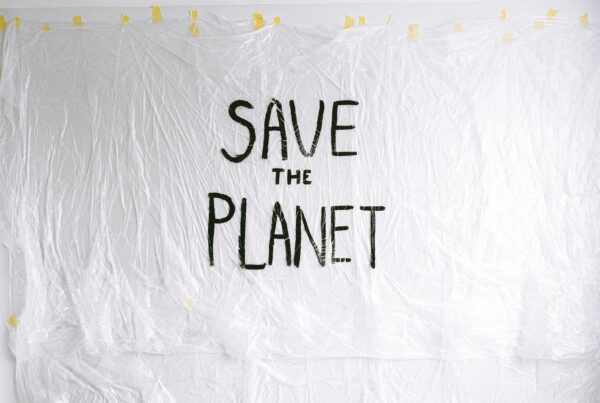Written by Amelia Głuszak and Maxime Martin
To tackle climate change, we need to cut our carbon dioxide emissions. But it will not be enough.
According to the latest IPCC reports, the planet is rapidly approaching a tipping point; once crossed, the changes to the global climate are likely to become irreversible. This can prompt one to believe that we no longer have any time to spare. Unless we take meaningful and impactful action, there could be no world left for us to inhabit in the next century.
All the same, among many solutions, there is one measure in particular which undoubtedly raises the eyebrows of a vast number of people. Carbon dioxide removal, or CDR—in case one prefers enigmatic acronyms—refers to the process of extracting carbon dioxide from the atmosphere. While its definition sounds ambiguous, in reality, it has already been in use for quite some time now. What’s more, as the Intergovernmental Panel on Climate Change (IPCC) emphasised in 2022, the deployment of CDR is essential for achieving carbon neutrality on a global scale.
Nonetheless, one may ask oneself if there is even a need to implement such complex measures as CDR? That being said, let’s take a closer look at the facts: nine billion tons of carbon dioxide are released into the atmosphere by humankind each year. It takes a long time for carbon dioxide to be naturally absorbed by plants—on average, it takes a century—which means that in three thousand years, 20% of carbon dioxide currently present in the atmosphere will still remain in the atmosphere. Consequently, to prevent climate catastrophe, we should not just reduce our emissions, but also aim to remove the carbon dioxide that has already been emitted.
This could be done by adopting nature-based solutions, including but not limited to restoring wetlands and planting trees. This seems simple: let’s plant more trees! However, what most people fail to understand is that afforestation and reforestation measures can do more harm than good. Indeed, planting trees without taking into account their biological needs may disrupt water cycles and alter local ecosystems. It takes trees several years to start absorbing carbon dioxide. Therefore, offsetting emissions by planting trees is inefficient, at least in the short term.
Even so, trees can be considered a useful tool against global warming, as they capture carbon dioxide. But are there any alternatives? Let’s imagine a technology-based solution to filter carbon dioxide in the air. This CDR technique is called carbon capture and storage (CCS). CCS refers to a process that can be divided into three smaller steps: (1) capturing carbon dioxide at sites where the emissions were generated; (2) transporting carbon dioxide (via pipelines, for instance); (3) storing or burying carbon dioxide underground. Some companies already invest in such facilities, like the Swiss company Climeworks. However, critics point out that such technology consumes a lot of energy without making a significant positive impact.
CCS treats the symptoms rather than the causes, which implies it cannot be the sole action undertaken by governments worldwide. Additionally, it doesn’t solve the issue of acidification of oceans. It goes without saying that there remains an enormous need to reduce the rate and extent to which anthropogenic greenhouse gases are emitted. Despite the many climate conferences in which global leaders participated in the past, the complex and multi-layered nature of the problem at hand makes it a tremendous challenge.
Alternatively, another technique of carbon dioxide removal is rock flour; it is the most impressive—or the craziest—method of all. Imagine you are taking a walk in the mountains. Find yourself a small rock and break it in half. You will notice that the external surface is darker than the inside. This stems from the fact that the carbon in the air crystallises on the surface of the rock upon contact. The principle of this technique is to inject tons of rock flour into oceans to provoke a massive crystallisation of carbon dioxide. According to scientists’ calculations, every year a mass of rocks equivalent to twice that of Matterhorn (the famous 4,784-metre-tall Swiss mountain) can capture humanity’s 9 billion tons of carbon dioxide. But how do we get these rocks? With huge quarries and machines which need oil-derived products to function? And with what impact on ocean wildlife?
Put simply: we cannot afford to rely completely on these technologies as carbon dioxide removal represents just one of the many means of climate change mitigation. To achieve the goal of keeping the global temperature rise below 1.5°C with respect to pre-industrial levels, one must not forget about other key actions without which climate change will never be resolved, including reversing biodiversity loss and reducing fossil-fuel reliance. Only by adopting a balanced approach can humankind be successful in securing its future.
Cover photo by Min An: https://www.pexels.com/photo/green-leafed-tree-low-angle-photography-1313807/
Other posts that may interest you:
- The Trouble with ‘Ecocide’
- Local Victories for Turkish Opposition — A Sign of Hope?
- Are France and Japan a Mismatch Made in Heaven?
- A Reflection on Dark Tourism
- Cadavre Exquis : Goodbye stranger
Discover more from The Sundial Press
Subscribe to get the latest posts sent to your email.





